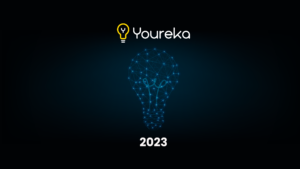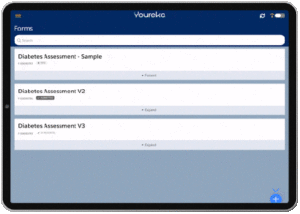Disparate systems. Inconsistent data. Limited accessibility.
Healthcare is bursting with data, and the stakes are high for patients and clinicians , but healthcare facilities still struggle to capture and manage that data. With dynamic mobile forms, the data can be used to improve treatment delivery, enable virtual care, manage risk, ensure compliance, and enhance the patient experience.
Streamlining healthcare workflows has been a primary goal of technology in the healthcare sector for nearly 50 years. In a data ecosystem comprised of multiple, distinct platforms that require integrations to “talk” to one another, there is significant risk of system incompatibility, inefficient processes, communication gaps, and incomplete data at the point of care. Consolidating data and improving workflows is an important connection for data management resources to help in medicine.
Healthcare workflows
Real-time, mobile data capture — available on- or offline — enhances patient treatments by enabling both access and contribution to recent, relevant medical resources that are HIPAA (Health Insurance Portability and Accountability Act) compliant. Guided procedures allow for better decision-making, treatment plans, and patient outcomes.
In symptom analysis, a great deal of decision-making relies on the clinician’s experience. With real-time access to data from larger populations, guided assessments could prompt clinicians with relevant trends drawn from global resources. This high-level data interaction could potentially offer every clinician, and every patient, the benefit of broad medical experience and fresh clinical data.
For healthcare workflows, guided procedures use data to develop and recommend treatment plans based on best practices and proven solutions. Patients enjoy the benefits of streamlined, coordinated care with consistent and accurate data available to clinicians whether it’s their first visit or a recurring one. For clinicians, guided procedures use real-time knowledge and data sharing to improve efficiency and outcomes. And it all starts with accessible, up-to-date medical information.
Virtual care
During the COVID-19 pandemic, virtual care practices accelerated to meet demand and comply with public health and safety measures. Now, many clinicians are adopting telehealth as a permanent part of their practice.
Dynamic, mobile healthcare forms support virtual care with data-driven guidance and enhanced functionality. Features include:
- Sentiment analysis to help clinicians gauge patient well-being
- Voice-to-text capability for data recording and instant electronic health record (EHR) updates
- Guided assessment and treatment features for streamlined workflows and enhanced patient care
- Symptom analysis for accuracy and precision driven by real-time data
- Coordinated care with mobile access — on- and offline — for real-time EHR updates

Healthcare data is historically prone to human error, but accuracy improves with artificial intelligence (AI) and machine learning fueling data capture, analysis, and assessment. AI-enabled image analysis, for instance, is getting better at first-pass diagnostics all the time, and it’s approaching a point where common issues can be flagged before the radiologist even opens the image.
Guided procedures and data capture further empower providers to proactively manage patient care and improve the overall patient experience. In another example, voice-to-text technology, supported by AI and machine learning, is improving the speed and accuracy of data capture. With these enhancements, healthcare technology is better equipped to recognize patient distress in a virtual care setting.
Guided assessment and treatment tools give clinicians access to data for diagnostics and treatment options. Symptom analysis is part of the process, and mobile data access can support provider identification of likely causes and treatments. This kind of communication allows for coordinated care among providers, which is vital to complex cases and successful virtual care.
Risk management and regulatory compliance
Healthcare risk management and regulatory compliance forms another piece of the dynamic data picture. Practitioners can update charts instantly for increased accuracy and streamlined workflows, and real-time record-keeping improves overall data quality to help maintain a clean data set. With clean, cloud-based data, healthcare systems can develop means-tested best practices to establish a stable foundation for limiting risk, facilitating revenue cycle management, and ensuring HIPAA compliance.
Dynamic, digital forms capture and deliver treatment-critical data to improve healthcare outcomes and optimize both the provider efficiency and the patient experience.
Read more in Youreka’s article, Form and Substance: Dynamic Mobile Forms, and contact Youreka for a custom demo of dynamic form solutions for healthcare application.



